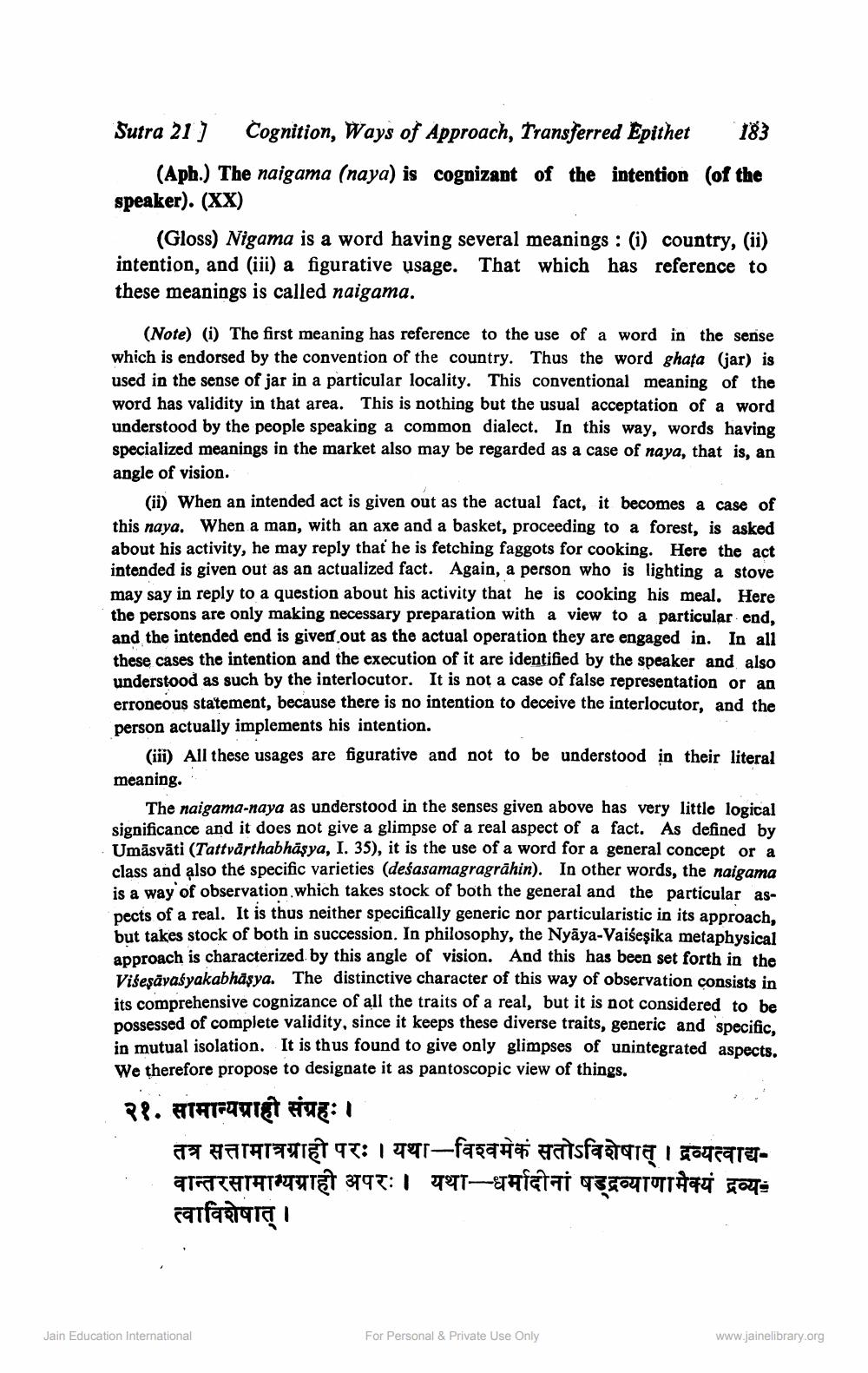________________
Sutra 21 ) Cognition, Ways of Approach, Transferred Epithet 183
(Aph.) The naigama (naya) is cognizant of the intention (of the speaker). (XX)
(Gloss) Nigama is a word having several meanings : (i) country, (ii) intention, and (iii) a figurative usage. That which has reference to these meanings is called naigama.
(Note) (i) The first meaning has reference to the use of a word in the sense which is endorsed by the convention of the country. Thus the word ghata (jar) is used in the sense of jar in a particular locality. This conventional meaning of the word has validity in that area. This is nothing but the usual acceptation of a word understood by the people speaking a common dialect. In this way, words having specialized meanings in the market also may be regarded as a case of naya, that is, an angle of vision.
(ii) When an intended act is given out as the actual fact, it becomes a case of this naya. When a man, with an axe and a basket, proceeding to a forest, is asked about his activity, he may reply that he is fetching faggots for cooking. Here the act intended is given out as an actualized fact. Again, a person who is lighting a stove may say in reply to a question about his activity that he is cooking his meal. Here the persons are only making necessary preparation with a view to a particular end, and the intended end is given out as the actual operation they are engaged in. In all these cases the intention and the execution of it are identified by the speaker and also understood as such by the interlocutor. It is not a case of false representation or an erroneous statement, because there is no intention to deceive the interlocutor, and the person actually implements his intention.
(iii) All these usages are figurative and not to be understood in their literal meaning.
The naigama-naya as understood in the senses given above has very little logical significance and it does not give a glimpse of a real aspect of a fact. As defined by Umāsvāti (Tattvärthabhāsya, I. 35), it is the use of a word for a general concept or a class and also the specific varieties (deśasamagragrähin). In other words, the naigama is a way of observation which takes stock of both the general and the particular aspects of a real. It is thus neither specifically generic nor particularistic in its approach. but takes stock of both in succession. In philosophy, the Nyāya-Vaiśeşika metaphysical approach is characterized by this angle of vision. And this has been set forth in the Višesävašyakabhäşya. The distinctive character of this way of observation consists in its comprehensive cognizance of all the traits of a real, but it is not considered to be possessed of complete validity, since it keeps these diverse traits, generic and specific, in mutual isolation. It is thus found to give only glimpses of unintegrated aspects. We therefore propose to designate it as pantoscopic view of things. २१. सामान्यग्राही संग्रहः।
तत्र सत्तामात्रग्राही परः । यथा-विश्वमेकं सतोऽविशेषात् । द्रव्यत्वाद्यवान्तरसामान्यग्राही अपरः । यथा-धर्मादीनां षड्द्रव्याणामैक्यं द्रव्यः त्वाविशेषात्।
Jain Education International
For Personal & Private Use Only
www.jainelibrary.org




